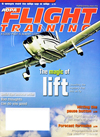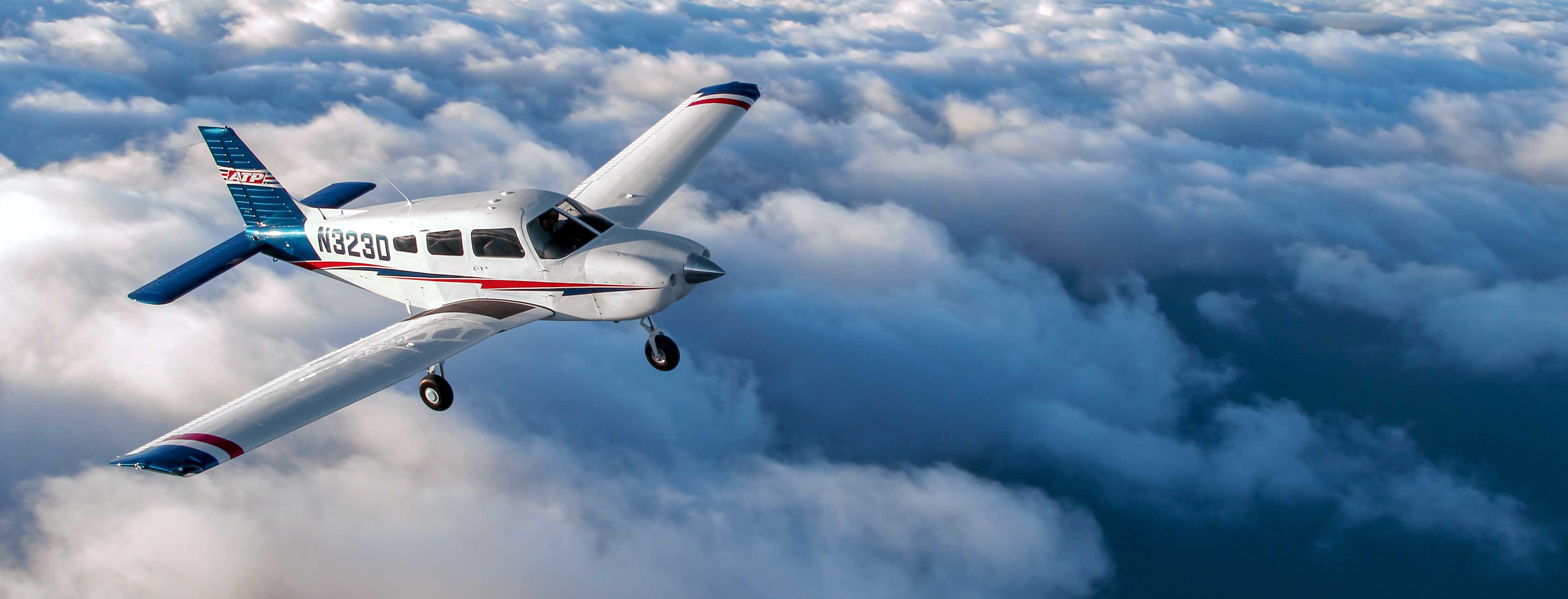Where’s the puck? Hiring Trends in a Down Economy
Right now might be the best time to prepare for the next hiring wave. When thinking about the future, consider the puck. When hockey powerhouse Wayne Gretzky was asked why he was so successful, he replied, "A good hockey player plays where the puck is. A great hockey player plays where the puck is going to be." The time to acquire FAA certificates and flight experience is right now. That "hiring puck" will be coming back into play.
During 2007, regional airlines in particular could not find enough warm bodies to fly their airplanes. Just a little more than a year ago, companies such as Trans States, American Eagle, Comair, Mesaba, and others slashed hiring minimums. Then came 2008 with its $140-per-barrel oil, an increase in the mandatory retirement age for airline pilots from age 60 to 65, and the weakened economy. As Tom Grossman, chief instructor at Western Michigan University, put it, "It’s like someone took the big hiring faucet and shut it off."
So, how goes it? What’s the scoop? Is the end of the hiring drought in sight?
Each January, Kit Darby’s group at Air, Inc. (www.jet-jobs.com) in Atlanta conducts a pulse check of the airline world. Keep in mind that what is seen here is a snapshot—a moment in time. The picture formed by a look back to the first 10 months of 2008 serves as a prologue to 2009. By the time this information is published, the industry could have gone topsy-turvy, inside-out again.
At this instant, no big-gun, brand-name airline is hiring, although Southwest is said to be interviewing. United Parcel Service, AirTran, Alaska, American, Continental, Delta, FedEx, Frontier, JetBlue, Northwest, United Airlines®, and USAirways have all shuttered the pilot hiring offices. Most have furloughed pilots. Thankfully, the early 2008 predictions of thousands of new furloughed pilots being shown the door has moderated somewhat because of decreasing oil prices.
Of particular interest to those navigating their way through the FAA ratings at colleges, flight schools, and academies is the status of the regional air carriers.
SkyWest Airlines a rock-solid company that is a great home for flight crews, pulled back in hiring through the first 10 months of 2008. In 2007, the airline drafted just more than 500 pilots, compared to 170 or so between January and October 2008. At this second, SkyWest is accepting applications.
Mesaba was way down. During 2007, the carrier picked up about 600 pilots. For the first 10 months of 2008, however, the number was more like 100. The rumor mill says that Mesaba was hiring during fall 2008.
Pinnacle was said to be accepting résumés in October and may still be. The company hired nearly 400 in 2007, with nearly 300 recruited during 2008.
Air Wisconsin, according to AIR, Inc., had furloughed fewer than 100 in September and had hired fewer than 100 January through October 2008.
American Eagle, a strong employer historically, offered first time flight deck slots to nearly 600 pilots in 2007, but sliced that number down to about 300 in 2008.
Comair has always been a strong player in the pilot hiring game. Not in 2008. In addition to parking a handful of regional jets, Comair reportedly furloughed more than 200 pilots in September.
ExpressJet not too long ago recruited more than 600 pilots in one year. The word on the street is some 300 pilots had been furloughed late last year, and the name ExpressJet has been replaced by CAL Express.
Horizon Air has been an employer coveted by many first-time airline pilots. It is a good company with a solid reputation. But the airline has not been hiring much new flying talent. In both 2007 and 2008, the number of pilots finding jobs with Horizon was fewer than 100. The scoop on the company is that some furloughing took place late in 2008.
Mesa Airlines appears to be going through some moderate financial turbulence. The last number available was well below 100 pilots finding first-time jobs at Mesa in 2008, with a handful on furlough.
Trans States Airlines, which had the lowest hiring minimums in 2007 at 250 hours total time, barely hired anyone in 2008 and had fewer than 100 on furlough late in the year.
Republic Airways, Brian Bedford’s group consisting of Republic, Shuttle America, and Chautauqua, shut the door pretty firmly in 2008 and had sent just shy of 200 pilots to the sidelines to wait it out. When the industry turns, as it will, this is an outfit worth considering for the "A" list of first-time airline employers.
Pretty depressing, isn’t it? But wait a second. Right now might be the best time to prepare for the next hiring wave. When thinking about the future, consider the puck. When hockey powerhouse Wayne Gretzky was asked why he was so successful, he replied, "A good hockey player plays where the puck is. A great hockey player plays where the puck is going to be." The time to acquire FAA certificates and flight experience is right now. That "hiring puck" will be coming back into play.
Boeing Aircraft Company released a report late last year regarding the future health of the aviation industry. These folks need to know how to tool up for business not for next week, but for years to come. Boeing says, "On average over the next 20 years, passenger travel will grow at 5 percent and cargo at 5.8 percent." The manufacturing giant calculates that the worldwide airline fleet today numbers about 19,000 machines. The projection for 2027 is for 35,800 airplanes.
Honeywell, the giant avionics manufacturer, says this, "Honeywell forecasts $233 billion in new business jet sales through 2017. Record delivery pace continues into 2009 on strong international demand: 14,000 new business jet deliveries projected through 2017."
The FAA has stated in its annual report, "The FAA continues to be optimistic about the future. Since 2000, U.S. airlines have dealt with the impacts of 9/11, heightened concerns about pandemics, the bankruptcy of four network carriers, and record high fuel prices. In spite of these challenges, the number of passengers traveling has grown, demonstrating the value of air transportation to the public. Last year, that number was a record 765 million. U.S. commercial aviation is on track to carry one billion passengers by 2016."
And about those fuel prices? In "Career Pilot: Roller Coaster Ride" (September 2008 AOPA Flight Training), it was predicted that the cost of oil would decline. USAToday published an article recently that said, "The same U.S. airlines that looked to be goners three months ago when oil reached $147 a barrel now may be headed toward healthy 2009 profits."
Can those of you interested in an airline career today see where the puck is going to be?



